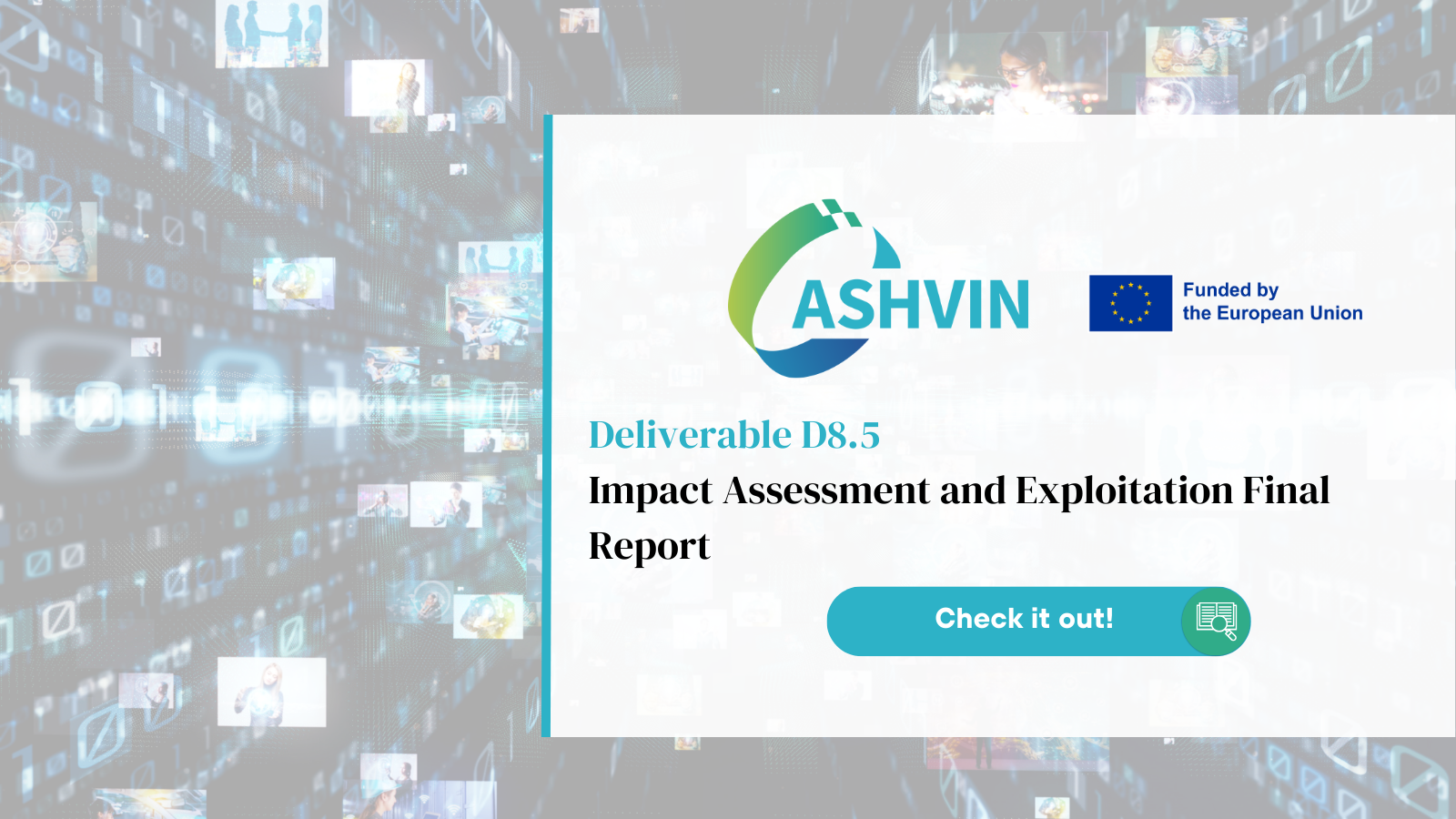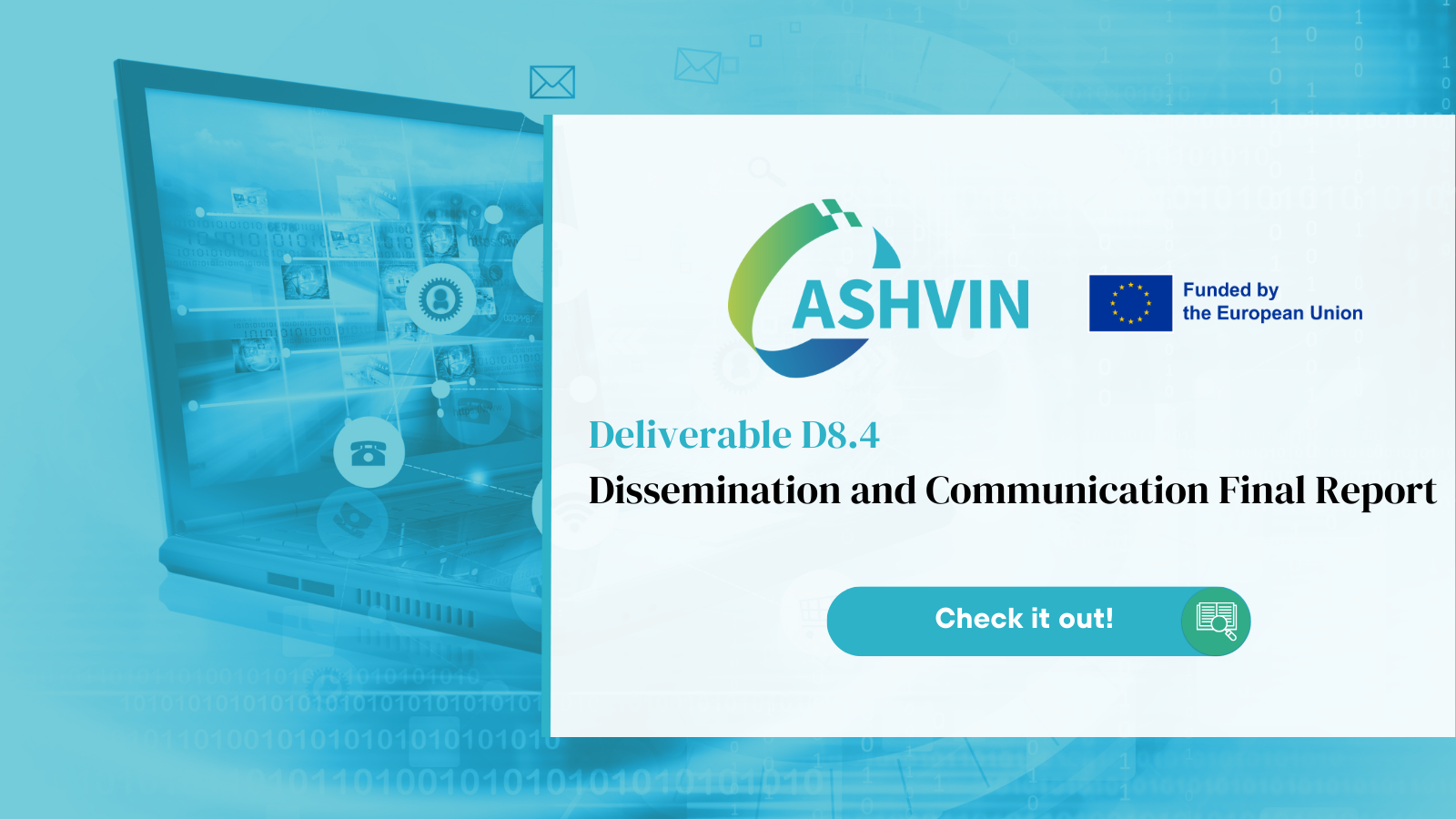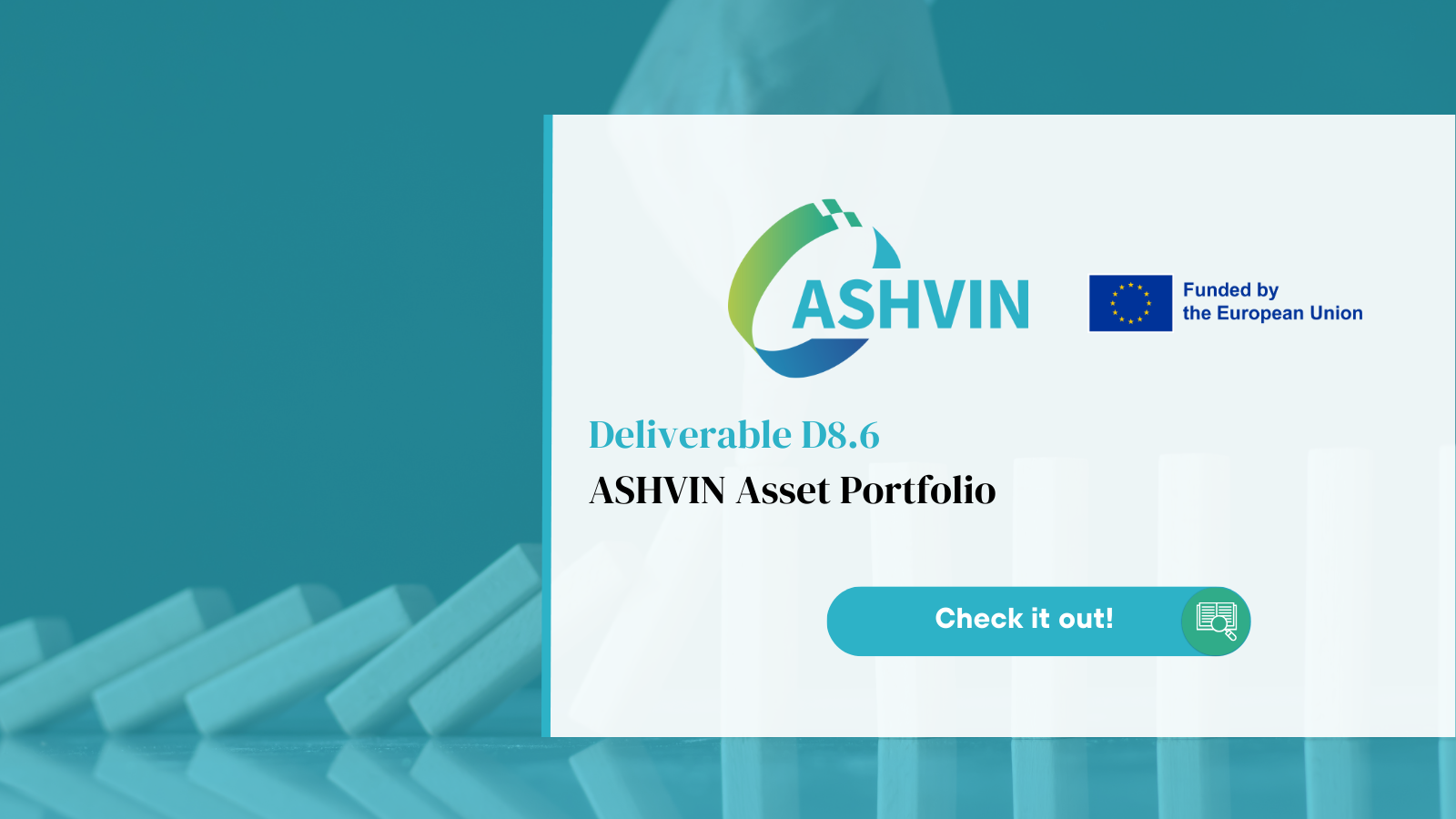Every 11 February the United Nations commemorates the International Day of Women and Girls in Science (↗️) to call for science and gender equality. However, despite the global community’s efforts, women and girls remain excluded from participating fully in science. As a European project funded under the Horizon Europe programme, ASHVIN and all similar projects must have a Gender Equality Plan. It is an eligibility criterion for all public bodies, higher education institutions and research organisations. But more than that, ASHVIN has addressed within the innovation areas and activities a gender aspect.
Based on the Gender Statistics Database of the European Institute for Gender Equality last Gender Equality Index 2022(↗️) progress continues at a snails’ pace, with a mere 0.6-point increase since 2021. The European Union’s average score now stands at 68.6 out of 100 points, only 5.5 points higher than in 2010. Furthermore, when it comes to research funding success rate differences (percentage points) between women and men by field of engineering and technology, the index is -0.3.
ASHVIN’s engagement in the Gender-Balance
ASHVIN has promoted awareness of gender and age balance and other equality issues. For example, our last data collected in December stated that among our 5 researchers, 3 of them are female. Moreover, our project has female experts in leading positions, for instance, Mrs Agnieszka Lukaszewska (↗️) (FASADA), Mrs Christina Claeson-Jonsson(↗️) (NCC) and Dr. Irina Stipanovic(↗️) (INFRA[SI(E1] ), and two women providing non-biding strategically advice in our advisory board Mrs Salla Eckhardt(↗️) (OAC) and Mrs Sebnem Düzgün (↗️) (Colorado School of Mines). In addition, around 35% of the project team are female, holding different roles, such as scientists, senior engineers, project managers, R&D specialists, technical support engineers, and communication managers.
Since the beginning, the gender aspect has been addressed within the innovation areas and our activities, especially concerning privacy and data security. Furthermore, ASHVIN is safeguarding that all data collection and data aggregation methods are sensitive to gender and minority-related bias.
As far as the construction sector is concerned, the gender ratio is not balanced. It remains one of the most gender-segregated industries in the world. In Europe,women made up only 10% of workers in the construction sector (↗️). Even construction equipment is designed for men, leaving women at a higher risk of injury on-site. As a result, the construction industry is only benefitting from about 1.25% of women in the workforce. Therefore, at ASHVIN, we are taking specific considerations throughout our work to increase the number of female construction workers on-site and in the office.
Scientific Women In ASHVIN
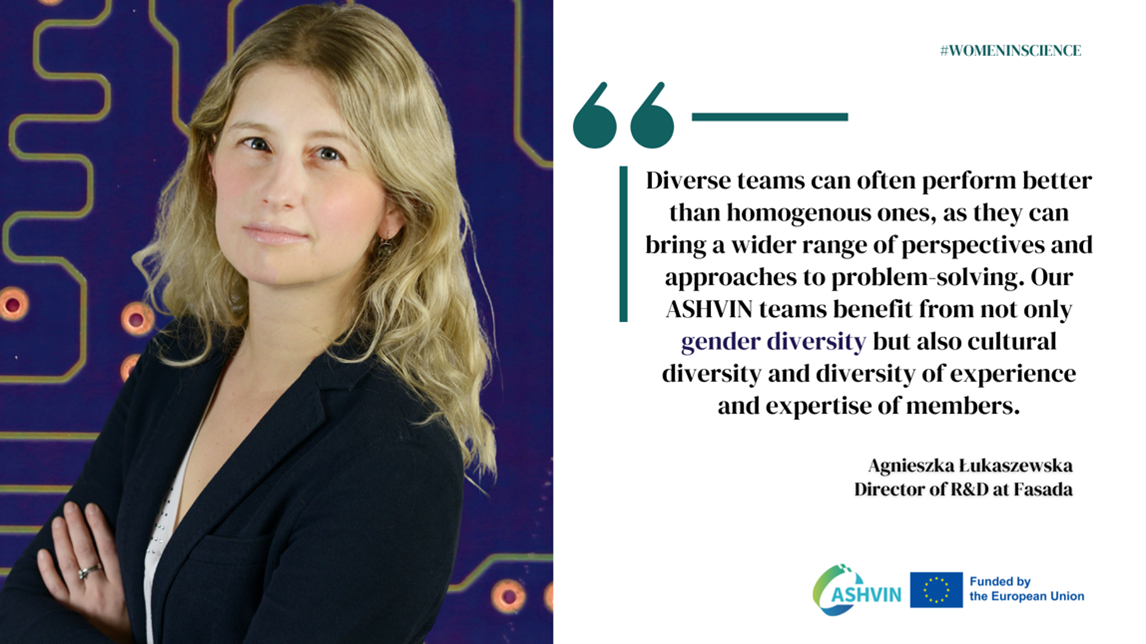
“The era of soft skills is beginning. Numerous sociological reports and forecasts indicate that empathy, high interpersonal and communication skills, efficient time management, ease of adaptation to new working conditions and resistance to stress will be as important as the hard skills assigned to a specific profession. From my experience a diverse team composed of both women and men with different individual skills, abilities and experiences are more effective in everyday work. Diverse teams can often perform better than homogenous ones, as they can bring a wider range of perspectives and approaches to problem-solving. In addition, diversity can lead to increased innovation and creativity, as well as better decision-making. In ASHVIN what counts are the competences and commitment and not the gender. Our ASHVIN teams benefit from not only gender diversity but also cultural diversity and diversity of experience and expertise of members.“
Mrs Agnieszka Lukaszewska(↗️) (FASADA)
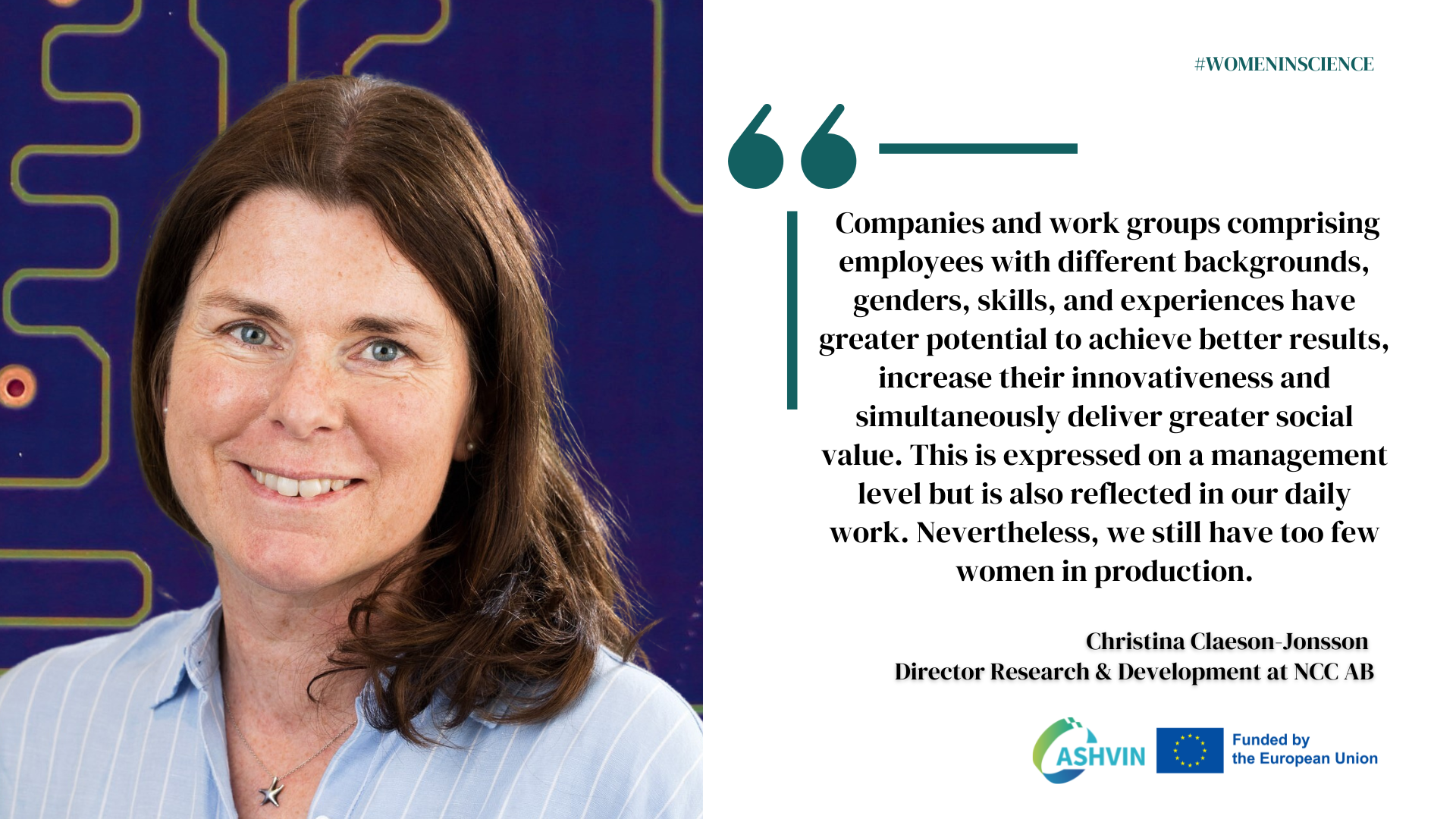
“NCC is convinced that companies and work groups comprising employees with different backgrounds, genders, skills, and experiences have greater potential to achieve better results, increase their innovativeness and simultaneously deliver greater social value. This is expressed on a management level and reflected in our daily work. Nevertheless, we still have too few women in production. By providing a digital twin, such as the ASHVIN one, based on real-time sensor data, we can make the best choices regarding productivity, safety, and sustainability. Through advanced simulations, we can provide feedback loops to the designers and guide current and future operations and use them to avoid costly maintenance problems in the future. We are moving our sector from low-tech to high-tech. This transition will make our sector more attractive to the next generation of employees, regardless of gender. Digitalization will also provide the means to facilitate communication and collaboration between partners in a project which leads to lower construction risks, lower construction costs, and higher quality. By simulations and visualizations of the different phases and scenarios, resource waste can be avoided, better production planning and logistics realized, and not the least, a safer construction site. Through visualization of data, a greater understanding of the problem and the proposed solutions can be achieved, and, thereby, more stakeholders’ and actors’ skills and experience can be utilized.“
Mrs Christina Claeson-Jonsson (↗️) (NCC)
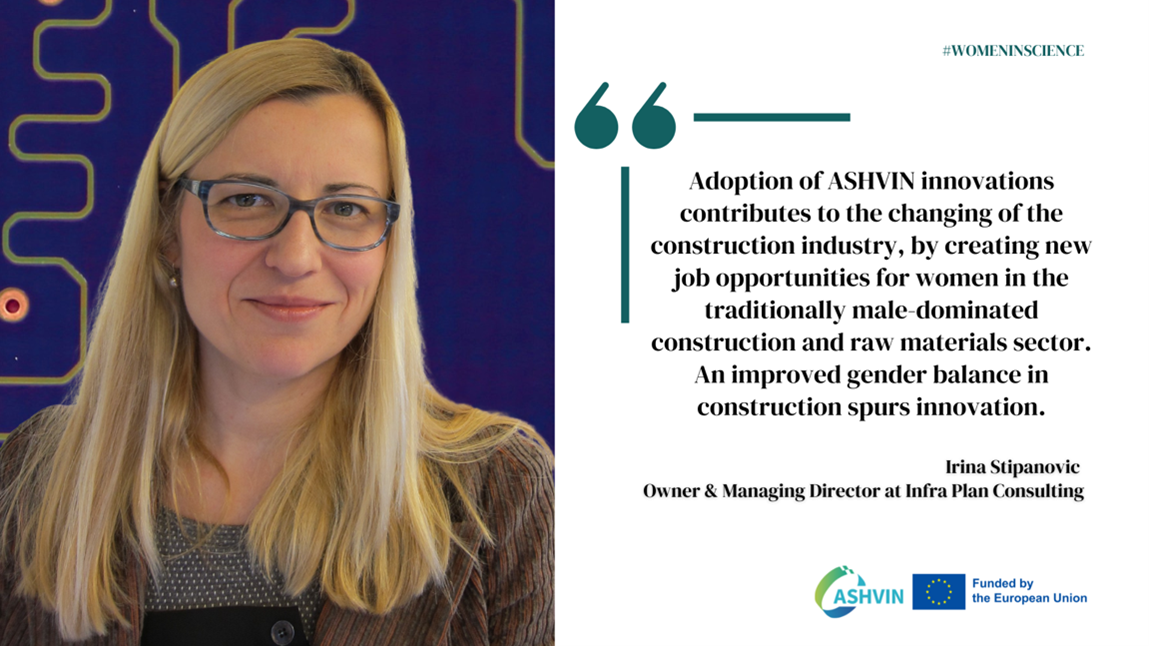
“The ASHVIN project has been developing several digital innovations for all stages of construction projects, from design over construction to operation and maintenance. Adopting these innovations contributes to the changing of the construction industry by creating new job opportunities for women in the traditionally male-dominated construction and raw materials sector. This should also help reduce the gender-based pay gap across the EU. Boosting the number of women in this part of the infrastructure sector and the linked supply/value chain is also an opportunity to deal with the labour shortage. The sectors linked need highly skilled employees – and women make up the majority of graduates in higher education. Another positive effect is that an improved gender balance in construction spurs innovation. In the INFCON company, we are strongly supporting the engagement of young female researchers, collaboration with a number of female professors and as well the engagement in the management of the company.“
Dr. Irina Stipanovic (↗️) (INFCON)
Stay tuned for more ASHVIN results, and connect with us through our LinkedIn or Twitter (↗️) communities!

